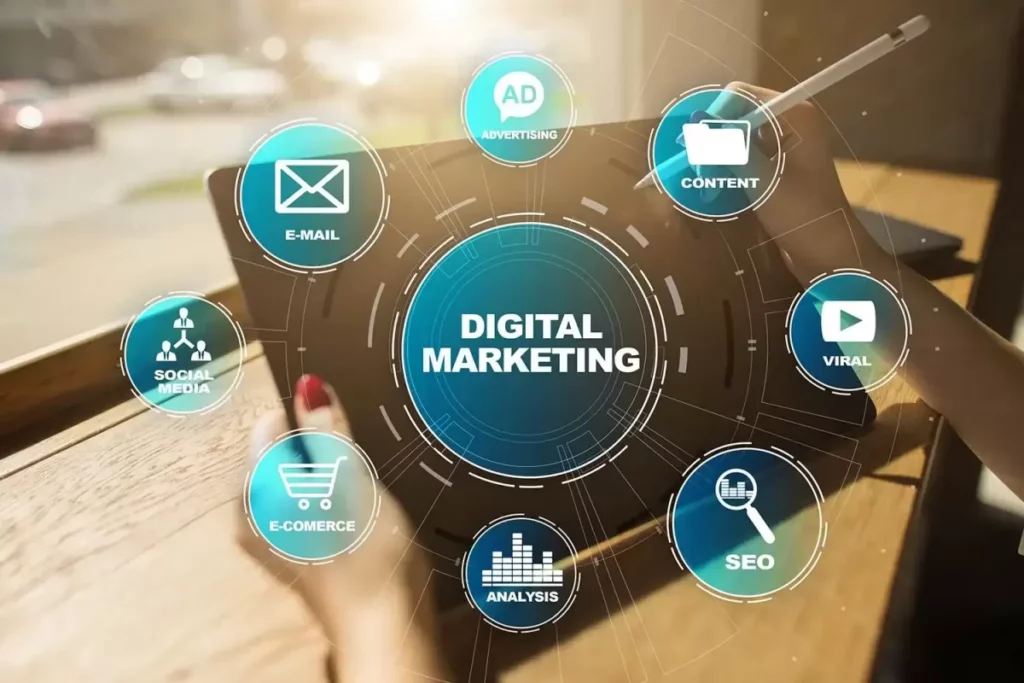As a local business owner, you know that having a robust online presence is crucial for attracting and retaining customers.
Your website is often the first impression potential clients have of your business; if it’s not up to par, they may quickly move on to your competitors. That’s why we’ve put together this comprehensive guide, chock-full of actionable tips and inspiring examples, to help you design a website that looks great and drives results.
Let’s get right into it with our first piece of advice!
Table of Contents
1. Know Your Audience

Before diving into design elements, it’s crucial to have a clear understanding of who your target audience is. Think about their demographics, preferences, and the problems they’re looking to solve. This information will help you create a website that speaks directly to your audience’s needs and wants.
If you run a local bakery, you probably want to reach families in the neighborhood looking for fresh bread and pastries. With this in mind, you can focus on creating a warm and inviting design that highlights your delicious products and emphasizes your commitment to quality.
2. Ensure User-Friendly Navigation
A well-designed website should make it easy for visitors to find what they’re looking for. Here are a couple of tips for creating a user-friendly navigation experience:
- Use clear and concise labels: Stick to simple, straightforward terms your visitors will understand.
- Limit the number of menu items: Too many choices can overwhelm users, so aim for 5-7 main menu items.
3. Prioritize Responsiveness
With more people accessing websites from their mobile devices, ensuring your website looks and functions well on all screen sizes is essential. This is known as responsive design, a must-have for any modern website.
Here are the key aspects to keep in mind when implementing responsive design:
· Flexible images: Use CSS to scale and resize your images appropriately for different devices.
· Fluid grid layout: Instead of using fixed-width formats, opt for a fluid grid that adjusts based on the user’s screen size.
4. Establish a Strong Visual Hierarchy
A well-organized website is not only visually appealing but also makes it easier for users to find what they’re looking for. By establishing a strong visual hierarchy, you can guide your visitors’ attention to the most critical elements on the page.
These tricks will help you create a solid visual hierarchy:
- Use size and scale: Larger elements naturally draw more attention, so use size to emphasize essential information and calls to action.
- Play with color and contrast: Bright colors and high-contrast elements can also grab the user’s attention and direct it where you want it to go.
5. Optimize for Local SEO

Having a well-designed website is important, but it’s also crucial to ensure that potential customers can actually find it. Local SEO (search engine optimization) is a strategy that helps improve your website’s visibility in search results for users in your geographic area. For example, if you are from Milwaukee, your goal should be to find an agency specialized in seo optimization in Milwaukee.
Here are a few tips for optimizing your website for local SEO:
- Include location-specific keywords: Make sure to incorporate your city or neighborhood name in your website’s content and meta tags to help search engines understand where your business is located.
- Create a Google Business Profile: This free service from Google allows you to create a listing that displays essential information about your business, such as an address, phone number, and hours of operation, directly in search results.
- Encourage customer reviews: Positive online reviews can boost your business’s credibility and help improve your local search rankings.
6. Utilize High-Quality Imagery
Visually striking images can have a significant impact on your website’s overall design and user experience. Invest in high-quality photos that showcase your products or services, and consider hiring a professional photographer if necessary.
Remember, your images are a representation of your brand, so make sure they’re top-notch.
7. Integrate Social Media
In today’s connected world, social media can be a powerful tool for promoting your local business.
Make sure to integrate your social media profiles into your website, so visitors can easily follow you and stay updated on the latest news, promotions, and events. This can also help boost your website’s visibility and drive more traffic.
8. Prioritize Loading Speed
A slow-loading website can frustrate users and lead to higher bounce rates.
To ensure your website loads quickly and efficiently, optimize your images, minimize the use of large files, and consider using a content delivery network (CDN). Additionally, you can leverage browser caching and minify your CSS and JavaScript files to improve loading speed further.
9. Include Clear Calls to Action (CTAs)
To encourage your website visitors to take action, such as making a purchase or signing up for your newsletter, it’s essential to include clear and compelling calls to action. Here are a couple of tips for creating effective CTAs:
- Use action-oriented language: Choose words that encourage users to take action, such as “Buy Now” or “Sign Up Today.”
- Make them stand out: Use contrasting colors and bold fonts to make your CTAs easily visible and attention-grabbing.
Inspiring Examples
Now that we’ve covered some essential web design tips for local businesses let’s look at a few inspiring examples that put these principles into action. These websites showcase the power of great design and can serve as a helpful starting point for your own site.
- Bevri — This San Francisco restaurant’s website features a clean and modern design with a strong focus on mouthwatering imagery of the Georgian food served there. The responsive design ensures that the site looks great on any device, and the simple navigation makes it easy for visitors to find what they’re looking for.
- Meg — This NYC boutique store’s website is a fantastic example of a solid visual hierarchy. The bold colors and large fonts draw the user’s attention to the most important information, and the layout is easy to navigate.
- L.A. Gym — This local gym’s website is visually appealing and highly functional. The responsive design ensures that users can easily access all the necessary information and sign up for memberships on any device. The straightforward navigation makes it easy to explore the site.
Wrap-Up
Creating a well-designed website for your local business is essential for building a strong online presence and driving results. In this endeavor, partnering with a branding and digital agency can ensure that your website not only looks professional but also aligns with your overall brand identity and digital marketing strategies. Additionally, following these actionable tips and taking inspiration from the examples provided, you can create a website that helps your business grow and thrive in the competitive local market.
It’s important to remember that web design is an ongoing process. Review your website’s performance and user feedback regularly, and be prepared to adjust as needed. By continually refining and SEO optimizing your site, you can ensure it remains an effective tool for attracting and retaining customers.
 socialhead
socialhead


